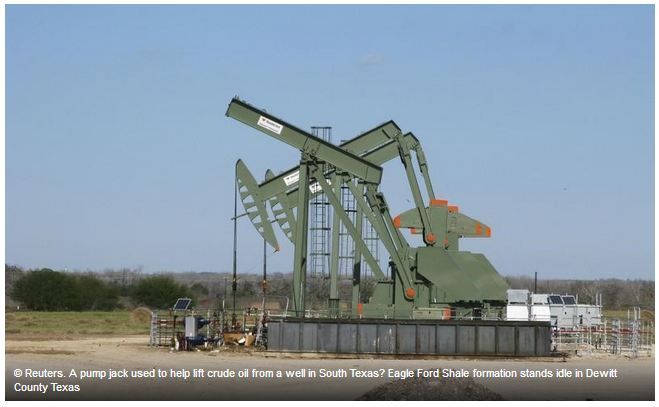By Naveen Thukral
SINGAPORE (Reuters) – Crude oil eased from a five-week high on Tuesday as rising U.S. shale oil production offset concerns over geopolitical tensions in the Middle East and output cuts being made to support prices.
The international benchmark for oil prices, Brent crude futures (LCOc1), were down 20 cents, or 0.36 percent, from its previous close at $55.78 per barrel at 0702 GMT. Earlier, Brent had climbed to its highest since March 7 at $56.16 a barrel.
U.S. West Texas Intermediate (WTI) (CLc1) gave up 15 cents, or 0.3 percent, to $52.93 a barrel, after having touched a five-week high of $53.23 a barrel.
Brent has risen in each of the previous six sessions, while WTI gained for the last five days.
“We are getting into the high risk part of this rally. It has been going on for a long time,” said Ric Spooner, chief market analyst at CMC Markets in Sydney.
“I wouldn’t be surprised to see a bit of book squaring going on now, ahead of the U.S. inventory data which is due on Thursday morning Asia time,” he said, also noting that current prices have attracted shale oil producers in the past.
U.S. crude inventories have touched record highs at both the U.S. storage hub of Cushing, Oklahoma, and in the U.S. Gulf Coast in recent weeks, according to U.S. government data.
But the market had been pushed higher by tensions following a U.S. missile strike on Syria and a another shutdown at Libya’s largest oilfield.
Libya’s Sharara oilfield was shut on Sunday after a group blocked a pipeline linking it to an oil terminal, a Libyan oil source said. The field had only just returned to production, after a week-long stoppage ending in early April.
The outage added to a rally that started late last week after the United States fired missiles at a Syrian government air base.
While Syria produces only small volumes of oil, the Middle East is home to more than a quarter of the world’s oil output.
The focus is also turning to the start of the U.S. summer driving season, which could support prices.
The Organization of the Petroleum Exporting Countries (OPEC) and other producers have pledged to cut output by 1.8 million barrels per day in the first six months of 2017, to get rid of excess supply.
But trading data in Thomson Reuters Eikon shows that for the majority of 2017 supplies have been exceeding demand despite the OPEC and non-OPEC supply cuts.














































